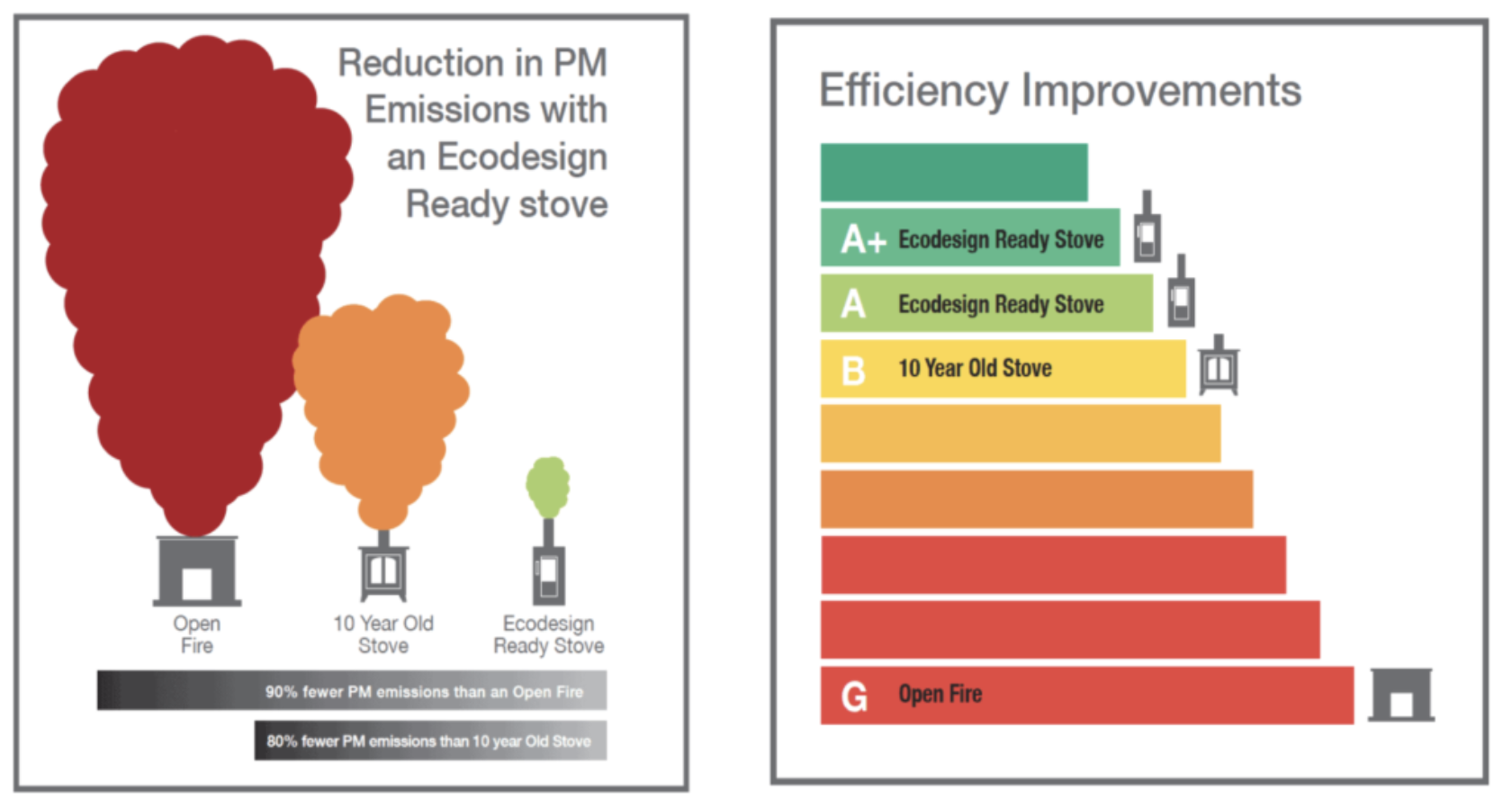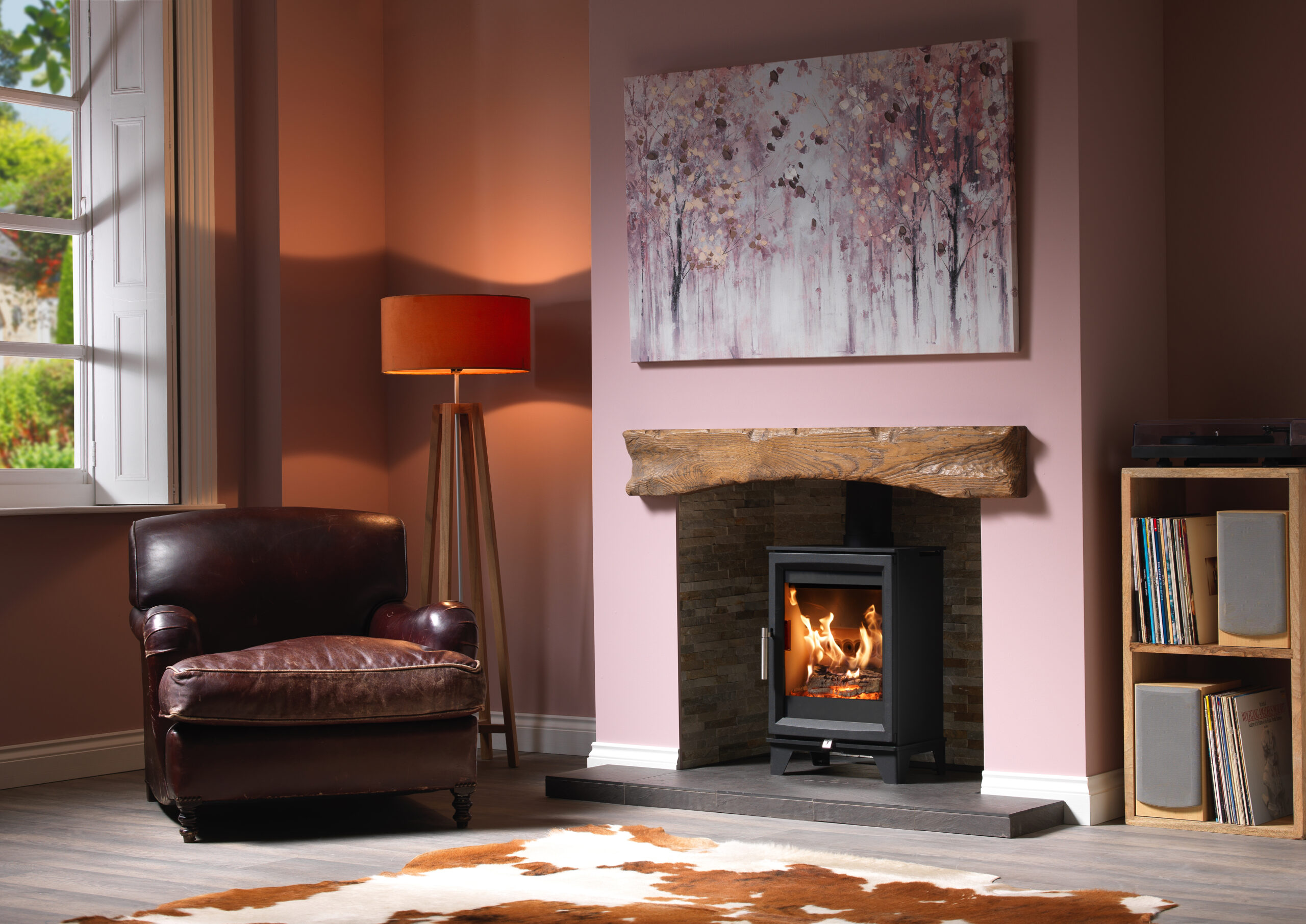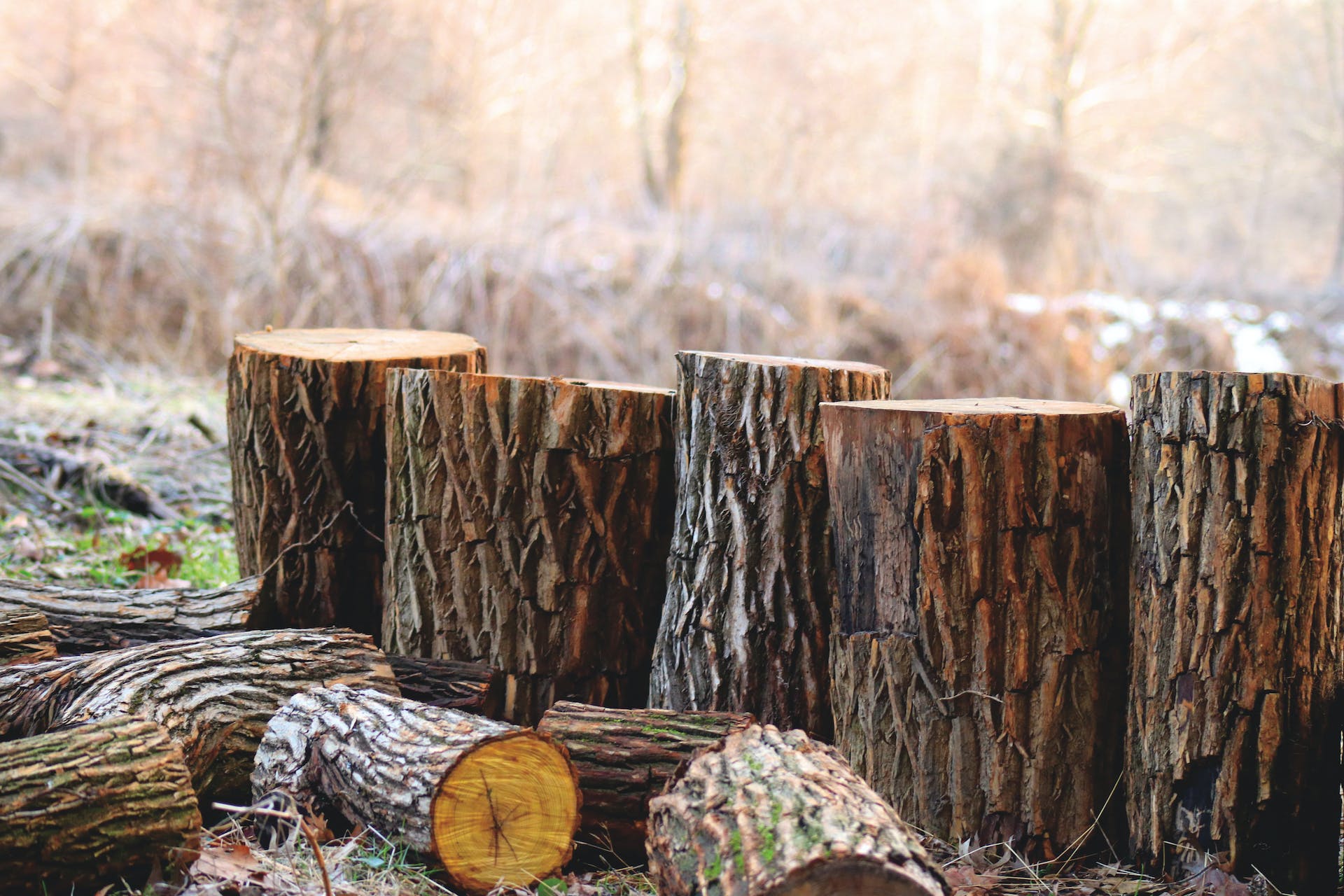Over the last few years, increasing numbers of householders have been turning to wood-fueled stoves as part of their overall heating strategy. With fluctuating high gas and electricity prices triggered by the Russian invasion of Ukraine in 2022, this often makes sense financially as well as environmentally sense, not to mention enhancing the living space with a very tangible, warm and homely ambience. However, there is often concern expressed about wood stoves and alleged pollution, plus cutting of wood to use as fuel, most of which is unfounded. To start with, it is worth discussing some common myths about wood burning and revealing the actual facts:
“Surely if we cut down trees to burn them, it is a bad thing, and we will end up with fewer trees and less wood left?”
That is not true – almost all firewood comes from thinning operations during forestry management, and if demand for wood fuel is low, then many areas of woodland can be neglected and not managed correctly. Increased demand for wood fuel will simply increase the amount of proper thinning and management that is done. Correctly managed woodland will increase its bulk and grow better than non-managed woodland. It is easy to forget that trees are constantly growing; they are not a static resource, a hardwood forest might accumulate up to 7 cubic metres (about 7 tonnes green) of new wood per hectare each year and softwood much more. When fully seasoned, this is approximately 5 tonnes of useful firewood per hectare per annum. There are 3.1 million hectares of woodland in the UK, which has increased in recent years, so it can be seen that the potential for fully sustainable wood fuel is huge.
“Isn’t it just as environmentally friendly to burn logs in my open hearth?”
Definitely not – open fires are very inefficient because combustion cannot be completed, and lots of warm room air is lost up the chimney whether or not the fire is burning. Open fires burning wood, or any fuel, are very inefficient and smoky and must be avoided at all costs. A modern Ecodesign wood stove will produce around 4 times the heat from the same amount of wood as an open fire, plus massively reduced smoke and particulate emissions.
“I hear that all wood stoves produce dirty smoke, tar and soot, don’t they?”
Not true – Some older stoves are nothing more than a dirty burning metal box, and they should definitely be replaced with an Ecodesign stove. Ecodesign stoves have completely altered stove emissions. The diagram below outlines just how much:

“Although the stove has a glass panel won’t it soot up after a couple of hours so we can’t see the fire?”
Not true. Charlton & Jenrick stoves have a very well-developed air wash system that operates as an integral part of the clean burn combustion system. Just maintain flames above the logs at all times, and the glass will not soot up. Older stoves either did not have these, or they were a poor add-on air wash box that did not work properly. With our modern designs and clean combustion usually the most that will be needed is a wipe over the glass with a dry cloth before lighting the stove next day.
“I hear that the ash will need to be taken out every day, and it’s too much hassle.”
Not true – most wood-burning stoves have ash capacity for many days burning within the firebox and ash pan. If only a stove is burned for evenings and weekends, it may only need to be emptied once every month or two. Modern wood stoves have a proper grate, allowing a build-up of ash bed to be achieved together with proper ash collection arrangements rather than the basic metal box requiring shovelling out that users used to be given. All Charlton & Jenrick Fireline stoves are provided with proper wood burning grates and stainless steel ash pans for ash management.
“Surely burning any fuel emits carbon dioxide, and that is a bad thing?”
Partial truth – Burning wood does emit carbon dioxide (CO2) like any other fuel but the big difference is the carbon cycle that is operating when using wood fuel. Coal, oil and gas are fossil-fuels so-called because the carbon inside them has been stored for millions of years underground – not in the atmosphere. When we burn these fossil fuels, we release that old carbon back into the atmosphere as additional CO2. When burning seasoned logs, we are still releasing carbon dioxide back into the atmosphere, but that gas has been absorbed by the wood in recent years. So, as we burn wood, a new or existing tree grows and soaks up CO2 from the atmosphere. As long as woodland is correctly managed, we are not adding to the overall burden of carbon in our atmosphere.

“Cutting, splitting, and stacking logs is hard work, and doesn’t it take up a lot of space?”
Not necessarily – Space is a big advantage for cutting, splitting, storing and seasoning wood at low cost, but you don’t always need to do things the traditional way. One method of greatly reducing hard work and storage requirements is to buy in prepared logs, preferably kiln-dried. These can be obtained just a few bags at a time from stockists or cheaper in bulk if a little space is available to store them.

“If we have to cut down trees shouldn’t we be using it for buildings or furniture instead of burning it?”
Not necessarily – As we have already identified, almost all firewood comes from thinning operations during forestry management. The type of wood harvested during these operations is just not of the high quality required for construction or cabinet making. It could be left to rot in the forest – releasing carbon dioxide anyway – or we can use it as a carbon-neutral fuel.
“Won’t we return to the bad old days of ‘London smogs’ if everyone burns wood?”
Not true – ‘ London smog’ was mainly caused by the fallout from terribly inefficient (20%) dirty open fires incompletely burning filthy coal fossil fuel. Open fires burning wood are very inefficient and smoky and must be avoided at all costs.
“I have central heating, so I can’t have a wood-burning stove, can I?”
Not true – all you need is a suitable chimney or flue – and these can be retro-fitted into a property or repaired easily where necessary. Most central heating systems should already have thermal radiator valves fitted (TRV’s) or zones so that if a stove is lit it will take over the thermal load from the central heating system in that room. If you do not have TRV’s then they are easily retro-fitted. A boiler stove can even be connected to almost any kind of wet central heating system and power the radiators and sometimes the hot water when it is lit. These types of mixed systems are improving rapidly and, as a bonus, greatly reduce dependence on gas or oil as a sole heat source.
To view our range of Ecodesign wood-burning stoves, please click here.








